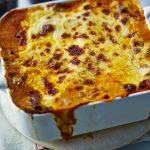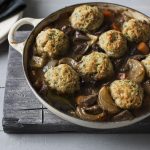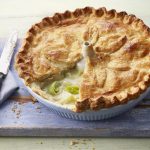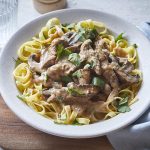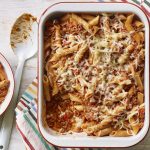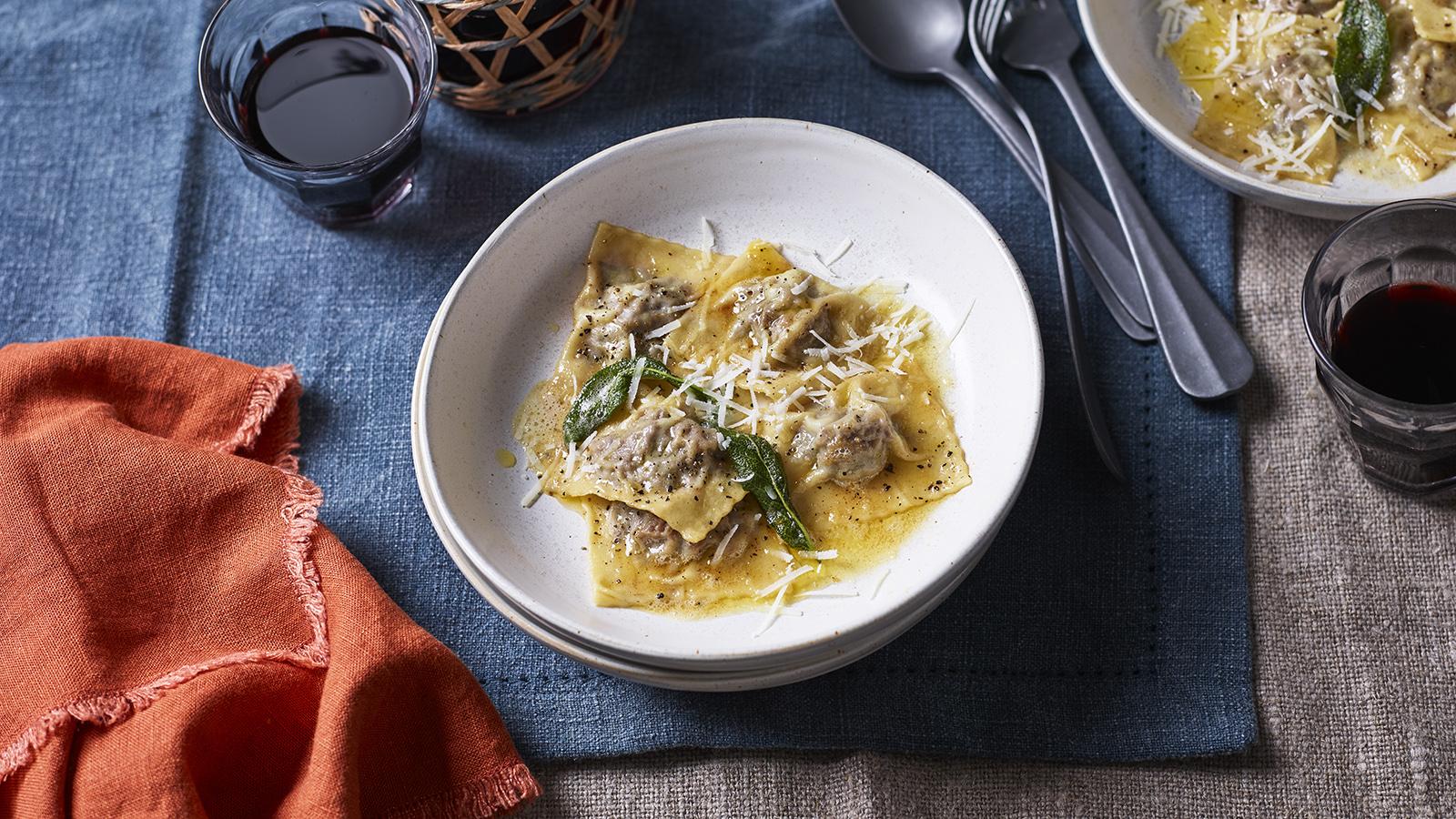
This is made possible by BBC Foods!
Ingredients
For the beef cheek filling
- 800g/1lb 2oz beef cheeks
- 2 tbsp plain flour
- 2 tbsp vegetable oil
- 1 large onion, diced
- 2 carrots, chopped
- 1 stalk celery, chopped
- 2 garlic cloves, finely chopped
- 1 tbsp tomato purée
- 200ml/7fl oz red wine
- 150ml/5fl oz beef stock
- salt and freshly ground black pepper
For the fresh pasta
- 200g/7oz ’00’ flour, plus extra for dusting
- 2 free-range eggs
- semolina flour, for dusting
- salt
For the sage butter
- 60g/2¼oz salted butter
- 16 small sage leaves
- freshly ground black pepper
- freshly grated Parmesan, to serve
Method
-
To make the beef cheek filling, roll the beef in the flour and pat off any excess.
-
Heat the oil in a large casserole over a medium heat, add the meat and cook until well browned all over.
-
Remove the meat and set aside.
-
-
Preheat the oven to 150C/130C Fan/Gas 2. Add the onion, carrots and celery to the casserole and cook for around 8 minutes.
-
Stir in the garlic and tomato purée.
-
Add the beer and stock and return the meat to the casserole.
-
Bring to a gentle simmer, cover with the lid and place in the oven. Cook for around 4 hours until the cheeks are tender.
-
Season with salt and pepper, to taste, and set aside to cool completely.
-
To make the pasta, place the flour in a mound on a large clean work surface.
-
Make a well in the centre and add the eggs. Gradually draw the flour into the eggs with your hands to create a dough.
-
The dough will become less sticky as it comes together. Form into a ball and knead for around 8 minutes until smooth.
-
Place in an airtight box and chill in the fridge for 30 minutes.
-
Divide the dough into two equal pieces and place one piece on a work surface dusted with semolina.
-
Make sure the other dough piece is covered with a damp tea towel to prevent it from drying out.
-
Roll the dough into a rectangle that is about 5mm/¼in thick.
-
Dust the dough with flour and feed it through a pasta machine on the widest setting. Fold and feed through again.
-
Repeat the process four or five times. Pass the dough through the pasta machine rollers, decreasing the setting until the pasta sheets are rolled in the final, narrowest setting.
-
Place the pasta sheets on a clean work surface, lightly dusted with semolina.
-
Lift the beef cheeks and some of the vegetables from the sauce with a slotted spoon and put into a bowl.
-
Fork through the mixture to shred the beef into small pieces, using some of the cooled cooking liquid to moisten, until you have a mixture that holds together but doesn’t feel too dry.
-
Place 1 heaped teaspoon of beef filling at intervals in a straight line along the length of one half of the dough strips.
-
Space them about 4cm/1½in apart and about 2cm/¾in from the edge.
-
Lightly brush the pasta with water between each mound and down the long edge of the pasta.
-
Fold the dough lengthways over the filling and then press gently over the filling to flatten slightly and seal.
-
As you seal each square, work to eliminate any airfrom the ravioli, as this will cause them to burst in the boiling water during cooking.
-
Trim the edges with a pasta cutter wheel and cut into separate ravioli squares.
-
Check that each ravioli is well sealed and set aside on a tray dusted with semolina.
-
To cook, fill a large saucepan with water, add 1 tablespoon of salt and bring to the boil.
-
Cook the ravioli in batches for 1–2 minutes, until the pasta is cooked and the filling has heated through properly.
-
Drain thoroughly.
-
-
To make the sage butter, melt the butter in a small frying pan with sage leaves.
-
Fry gently until the sage leaves start to sizzle and the butter starts turning golden brown.
-
Add some black pepper. Turn the ravioli in the sage butter and serve with Parmesan.
Banner and Image Credit: BBC
